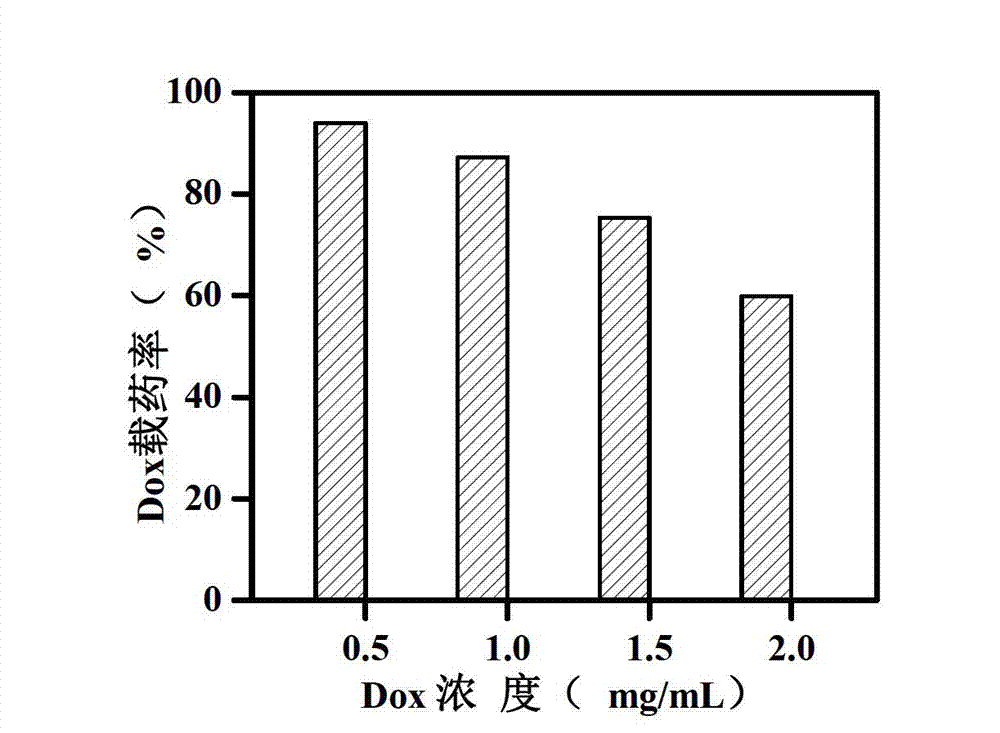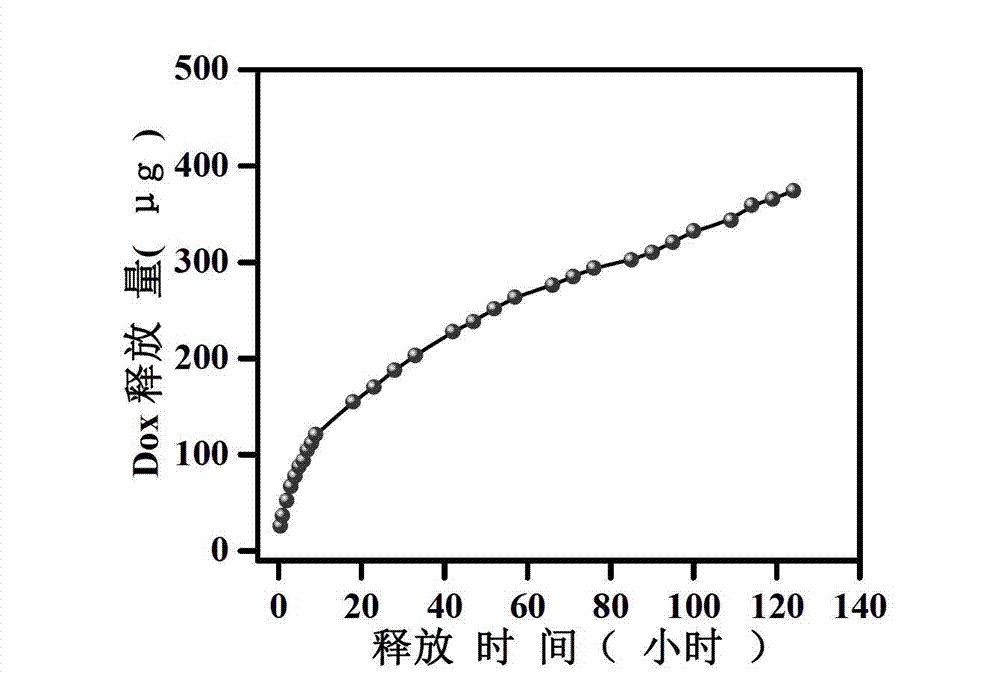Magnetic nano-composite microsphere based on cellulose base template and preparation method and use of magnetic nano-composite microsphere
A composite microsphere and magnetic nanotechnology, which is applied in non-active ingredients medical preparations, inorganic non-active ingredients, pharmaceutical formulations, etc., can solve the problem of low magnetic content, uneven distribution of inorganic magnetic particles, and surface cleanliness of composite microspheres. bad wait
- Summary
- Abstract
- Description
- Claims
- Application Information
AI Technical Summary
Problems solved by technology
Method used
Image
Examples
Embodiment 1
[0034] Example 1: Preparation of ferric oxide / poly-N-isopropylacrylamide-polyacrylic acid magnetic nanocomposite microspheres
[0035] (1) Preparation of poly(N-isopropylacrylamide-polyacrylic acid) nanocapsules: In a 500 mL stirred reactor, 0.20 g of hydroxypropyl cellulose with a number average molecular weight of 100,000 was dissolved in 35 mL of distilled water. After stirring at room temperature, a clear and transparent solution was obtained. Then add 0.20 g of acrylic acid, 0.1 mol / L of ascorbic acid (VC) solution and hydrogen peroxide (H 2 o2 ) solution, reacted for 2 hours at 38 ℃ to obtain a milky white hydroxypropyl cellulose-polyacrylic acid colloidal dispersion; 0.15 g of methylene bisacrylamide and 0.05 g of surfactant sodium dodecyl sulfate (SDS) were blended and dissolved in 15 mL of distilled water, and the above solution was added dropwise to the hydroxypropyl cellulose-polyacrylic acid dispersion, React at 35°C for 6-8 hours to obtain a hydroxypropyl cell...
Embodiment 2
[0038] Example 2: Preparation of ferric oxide / poly-N-isopropylacrylamide-polyacrylic acid magnetic nanocomposite microspheres
[0039] (1) Preparation of poly-N-isopropylacrylamide-polyacrylic acid nanocapsules: the process is the same as in Example 1 (1).
[0040] (2) Preparation of Fe3O4 / polyN-isopropylacrylamide-polyacrylic acid magnetic composite microspheres: the above-mentioned polyN-isopropylacrylamide-polyacrylic acid nanocapsule powder was prepared to a concentration of 1.0 mg / mL Take 10 mL of this solution and add 5.0 mg of ferric chloride and ferrous chloride respectively. After standing at room temperature for 24 hours, centrifuge to obtain poly-N-isopropylacrylamide adsorbed with iron ions. - Precipitation of polyacrylic acid nanocapsules. Then the obtained precipitate was redispersed in 20 mL of distilled water, and when the temperature was raised to 50 °C, 75 mL of sodium hydroxide solution with a concentration of 0.15 mg / mL was added dropwise, N 2 React und...
Embodiment 3
[0042] Example 3: Preparation of ferric oxide / poly-N-isopropylacrylamide-polyacrylic acid magnetic nanocomposite microspheres
[0043] (1) Preparation of poly-N-isopropylacrylamide polyacrylic acid nanocapsules: the process is the same as in Example 1 (1).
[0044] (2) Preparation of Fe3O4 / polyN-isopropylacrylamide-polyacrylic acid magnetic nanocomposite microspheres: the above-mentioned polyN-isopropylacrylamide-polyacrylic acid nanocapsule powder was prepared at a concentration of 1.0 mg / mL of nanocapsule solution, take 10 mL of this solution and add 7.5 mg of ferric chloride and ferrous chloride respectively, and after standing at room temperature for 24 hours, perform centrifugation to obtain poly(N-isopropylpropylene) with iron ions adsorbed Precipitation of amide-polyacrylic acid nanocapsules. Then the obtained precipitate was redispersed in 20 mL of distilled water, and when the temperature was raised to 50 °C, 75 mL of sodium hydroxide solution with a concentration...
PUM
 Login to View More
Login to View More Abstract
Description
Claims
Application Information
 Login to View More
Login to View More - R&D
- Intellectual Property
- Life Sciences
- Materials
- Tech Scout
- Unparalleled Data Quality
- Higher Quality Content
- 60% Fewer Hallucinations
Browse by: Latest US Patents, China's latest patents, Technical Efficacy Thesaurus, Application Domain, Technology Topic, Popular Technical Reports.
© 2025 PatSnap. All rights reserved.Legal|Privacy policy|Modern Slavery Act Transparency Statement|Sitemap|About US| Contact US: help@patsnap.com


